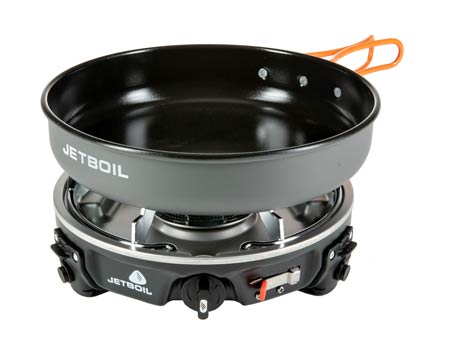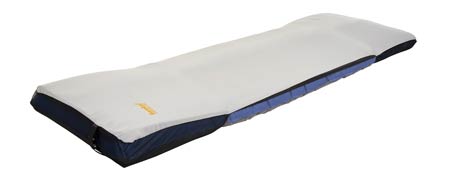Winter Backpacking Essentials
Any time you hit the trail, you need to plan ahead and bring the right gear with you. But backpacking in winter has its own unique challenges and rewards. You have to dress warmly, keeping your face and extremities warm and dry. But you also need to dress in layers, remembering that you'll need more warmth when you're camped out than when you're active and moving on the trail. You have to bring enough fuel to melt and then boil snow for drinking water. You have to make sure that sweaty clothes and water bottles don't freeze over.
But this extra effort is well worth it. Backpacking in winter shows you a whole new side of the backcountry. The muted stillness of the woods is like another world, and the trails tend to be a lot less crowded. And the extra prep work isn't that hard, as long as you know what you're doing. To help make sure that you do, we're looking at how to deal with food, clothing, shelter, and more when it's cold out.
Fuel for the journey
One of the barest essentials for any hike is water. In winter, your best bet for a steady water supply is just to melt and boil the snow around you into purified drinking water.
You need to be able to keep a steady supply of water coming, as well as deal with any cooking that's necessary. In winter, when the wood around you is likely wet with rain or snow, that probably means a portable stove of some kind.
Water boiling systems
Of course, Jetboil stoves are our favorites, but it's not just because we make them. They're consistently the fastest, most fuel-efficient way to boil water. (Especially the Jetboil Flash.) And when you're out there boiling snow, every ounce of fuel matters. You'll also want to bring a lighter or matches along. Even if your stove has a push-button ignition, you never know when you might need a fire.
Of course, hot water is useful beyond just drinking water and coffee. One great way to stay warm at night is to keep a bottle of heated water cuddled up on the inside of your thighs. There's a major artery there, close to the skin, that will benefit from the warmth. (On that note: You'll probably want to bring an insulated water bottle along.)
Stovetop cooking
A hot meal means a little more when it's cold out. Having a proper stovetop and pan to cook in may not be as essential as being able to boil water, but it sure doesn't hurt. Whatever you use to cook, it's good practice to bring along one extra day's worth of food, just in case you get slowed down a little, or wind up hungrier than you realized.

Winter backpacking gear for the campsite
A lot of the gear you need for winter backpacking is the same type of gear you'd need for a regular backcountry adventure. The difference is making sure that your gear is rated for the weather that you're going to be facing. Having a light, breezy tent and sleeping bag can keep you from overheating on hot summer nights, but they won't do a lot when you need to bundle up.
Winter tents
Cold-weather tents are known as "4 season tents," or sometimes "expedition tents". A solid winter camp tent is going to keep a low profile, to buffer against harsh winds and heavy snow. It'll also be made of stronger stuff than most tents, to keep in heat and hold up against whatever nature can throw at it. Our winter backpacking tents also include an adjustable ventilation system to let you control airflow, so that you can use the tent even when you're not in harsh climes or the depths of winter.
Cold weather sleeping bags
There's a lot to consider when buying a sleeping bag. Weight is a big factor. So is the minimum amount of space you can squeeze it into. But if you're backpacking in winter, you'll want to give a little extra consideration to the temperature rating. Depending on where you'll be, you may want to look in the 30-45°F range, or even the 15-20°F range, to find a sleeping bag that'll keep you cozy.
Air pads and tent floors
Putting a little distance between you and the ground can help you stay comfortable. Beyond being a little too firm for most people's preference, the ground freezes over in the winter. The more distance you put between you and it, the better. A good tent floor will also help insulate your tent a little, and a sleeping pad can go a long way to keeping you resting comfortably.

Cold-weather hiking clothes
"Winter" means something different wherever you go. In some places, a light, waterproof jacket may be all you need to keep warm and deter precipitation. In other places, the weather is more severe. Many places have frostbite warnings in effect for much of the winter, warning people to avoid exposing skin to the open air at all, if possible. Here are some clothing items you might consider:
- Base layer clothing that includes long johns of an appropriate weight
- Outerwear, including an insulated, waterproof jacket and pants.
- Headwear, like a ski mask and goggles
- Gloves
- Footwear, including heavy socks, insulated camp shoes, and waterproof hiking boots or snowshoes
You'll want to dress in layers, so that you can adjust your outfit over the course of the day. Remember that you're going to heat up once you get moving. That means that you probably want to start the day feeling a little cold. If you start your trundle too bundled, you'll start sweating more as you hike. And the last thing you want when the evening chill comes is an outfit that's soaked through with sweat.
Other gear for winter backpacking
You may be hiking in different weather, but you're still hiking. Don't forget to take the gear you'd normally take! Think about essentials like your pocketknife or multitool, and your first aid kit. Then there are other things particular to the season that are useful to have around. You may want to bring along some of those chemical heat packs to keep your hands warm. You may want trekking poles or crampons for traction. And you probably want a small or collapsible shovel in case you need to move some snow around. Here are some other things to consider:
Sun protection
It may surprise some folks, but you still need sun protection in the winter. The cold doesn't reduce the sun's rays shining down on you. In fact, sunlight reflecting off of snow can contribute to eye fatigue and sunburn, just like the sunlight that's shining right down. Pack sunblock, and consider shades.
Don't count on your phone for everything
Many of the batteries used in modern cell phones don't take kindly to the cold. You can squeeze a little more life out of them by keeping them close to your body heat, but generally, your devices die a lot faster when the temperatures are low. That's bad news if you're counting on your phone to be your map, compass, GPS, flashlight, and alarm clock. Consider bringing some or all of those things along.
Hiking Through a Winter Wonderland
Every hike is different. Not everything on this list may make sense for the specific place you're camping out, and that's completely fine. Use your best judgment-just err on the side of being prepared. Bring the right equipment for the job, let people know where you're going and when you'll be back, and hike with a buddy.
Winter backpacking can be incredibly rewarding. And sure, you have to take a little extra gear along for the trip. But it's more than worth the hassle to appreciate the stillness of a snow-covered backcountry. Get geared up and get going!







